Russia River cruise map
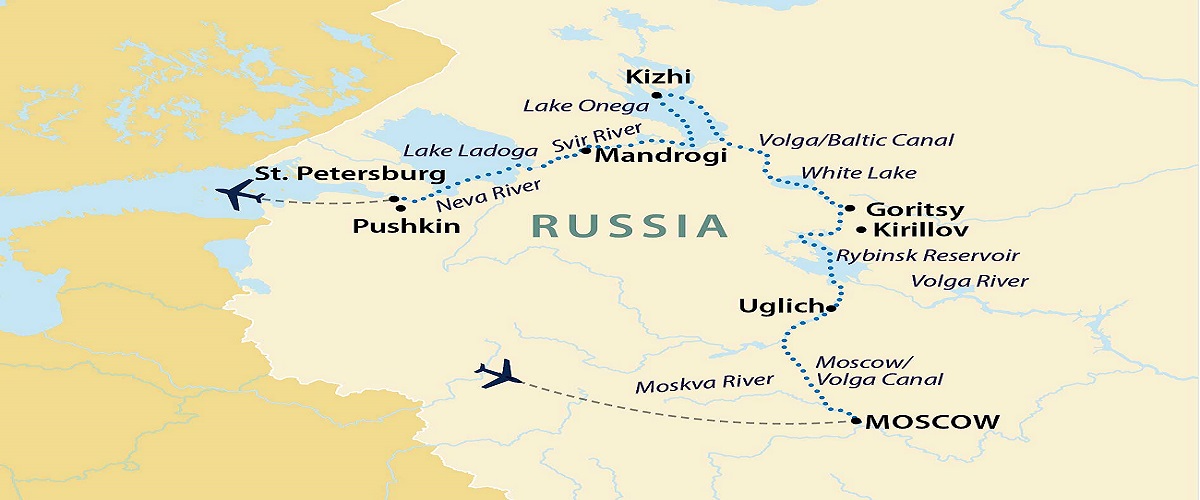
Day 1 – 2
Astrakhan: You will be met at the airport by one of our drivers and taken by a comfortable car to the river port where you will board your cruise ship. Our company can easily arrange inexpensive airfare from Moscow or St. Petersburg to Astrakhan, just ask one of our customer service representatives about this.
Your journey begins as soon as you arrive in Astrakhan and board the ship. Sightseeing in this city includes a panoramic city tour and a visit to the Kremlin.
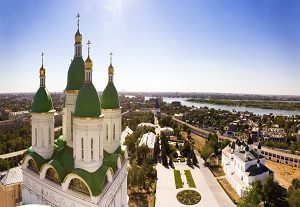
Astrakhan is an old southern Russian city situated on the banks of the Volga River not far from the point where it empties into the Caspian Sea. Older parts of Astrakhan are filled with wonderful examples of Russian architecture, the most notable of which are the Kremlin and the two impressive cathedrals. Before being conquered by Ivan and Terrible and thereby becoming part of the Russian Empire, Astrakhan was the capital of Khazaria (the famed Jewish Empire of the 8th and 9th centuries) and was a stronghold of the Golden Horde. In the 17th century Astrakhan was developed as Russia’s Gate to the Orient and became a truly International city with its population composed of many different nationalities including Indian, Persian, Armenian, Russian, Khivian, Turkish and others. Astrakhan is truly a place where East meets West and a unique Russian and Eastern city all at the same time.
Day 3
Day on board. You will spend this day on board your cruise ship enjoying an entertainment program.
Day 4
Volgograd: We will begin with a Panoramic city tour and visit the memorial complex on Mamayev Kurgan, a hill that saw some of the most intense fighting during the Stalingrad battle. You will see the famous Russian monument Rodina Mat’ (Mother Motherland) and learn about the city’s brave defense against the Nazi invaders during the battle of Stalingrad.
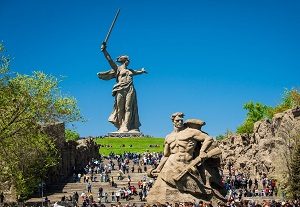
Volgograd is an important industrial city with a population of 1.011 millon people. The city was founded as the fortress of Tsaritsyn in 1589 to defend the southern flank of the Russian Empire and played a major role in Russian Civil War and the development of the Soviet Union. However, the city is most famous for its heroic resistance and extensive damage during the Battle of Stalingrad during World War II. The battle is seen by most scholars as the pivotal battle of WWII – the battle in which the tide was turned against Hitler’s fascist invaders. Over 2 million Soviet and fascist troops died in the battle which lasted over 6 months.
Day 5
Saratov: During a panoramic city tour you will become acquainted with this southern city’s most prominent landmarks.
Saratov is a major city in southern Russia with a population of 873,055. The city was initially founded in the 16th century as a fortress to protect the southern districts of the Russian Empire. Situated on the Volga River, Saratov was a major military aircraft manufacturing site, the home of the first man in space, Yuri Gagarin, and a vital part of the Soviet space program. It has a rich cultural life, as well – among the most famous sites is the Conservatoire designed in a Neo-Gothic style as well as the Drama Theatre named after Ivan Slonov, one of the oldest theatres in Russia.
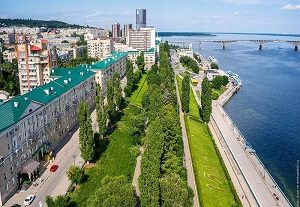
Of other interest, the community of Volga Germans was centered in the Saratov region. In the early 20th century over 800,000 ethnic Germans made there home in this area preserving many of their German customs.
Day 6
Samara: You´ll take a panoramic city tour with a visit to the Art Gallery.
Samara is located on the east bank of the Volga river, which acts as its western boundary. Its northern boundary is formed by the Sokolyi Hills and by the Steppes in the south and east. Legend has it that Alexius, Metroplitan of Moscow and later Patron Saint of Samara visited the site of the city in 1357 and predicted that a great town would be erected there and that the town would never be ravaged. Perhaps this is one of the reasons that during WWII Samara was chosen to be the capital of the Soviet Union if Moscow should fall. Many government ministries and government workers were evacuated to the city at the beginning of the war.
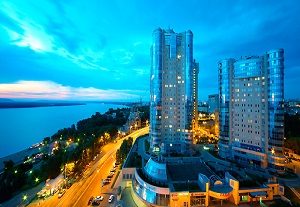
Day 7
Kazan: You´ll take a city tour with a visit to the Kremlin grounds and get a feel for this most eastern of cities full of history, the capital of Tatarstan.
Kazan is the capital city of the Republic of Tatarstan, Russia, and one of Russia´s largest cities. It is a major industrial, commercial and cultural center, and remains the most important center of Tatar culture. Historically Kazan was the capital of the Tatars and was conquered and by force and brought into the Russian Empire in the mid 16th century by Ivan the Terrible. During the siege of Kazan and in the years that followed almost the entire population was massacred. Kazan lies at the confluence of the Volga and Kazanka rivers in central European Russia. The famous Kazan Kremlin is a World Heritage Site.
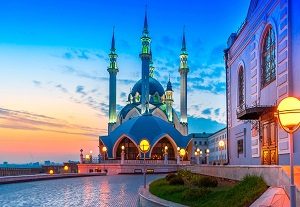
Day 8
Cheboksary: You´ll take a panoramic city tour.
Cheboksary is the capital of the Chuvash Republic, home to the Finno-Ugric Chuvash people. The city possesses excellent cultural opportunities. There is an Opera-Ballet Theatre, a Philharmonic Orchestra, and numerous other theaters (showing productions in both Russian and Chuvash languages). A very popular gathering place for the locals is the recently completed zaliv (bay), beautifully situated in the middle of the city and adorned with the Monument of Mother. People gather there to stroll, visit cafes, and socialize. Cheboksary also has beautiful boardwalks and beaches along the Volga River.
Day 9
Nizhny Novgorod: During a city tour you will become acquainted with the city’s most prominent landmarks and you will also see the Kremlin grounds.
Nizhny Novgorod is one of Russia’s major cities, the dominating feature of the city skyline is the grand Kremlin (1500-1511), with its red-brick towers. After Bolshevik devastation, the only ancient edifice left within the Kremlin walls is the tent-like Archangel Cathedral (1624-31), first built in stone in the 13th century. The city has a fascinating history that you will learn more about during your tour. The city was founded in the 13th century and became one of the Russian Empire’s most important outposts by the 16th century. The city played a pivotal role in ending the Time of Troubles by forming an army that would expel the Poles from Moscow. Much of the city downtown is built in the Russian Revival and Stalin Empire styles. There are more than six hundred unique historic, architectural, and cultural monuments in the city leading the way for UNESCO to include Nizhny Novgorod in the list of 100 cities of the world which are of great historical and cultural value.
Day 10
Kostroma: You will be taken to the panoramic city tour, visit the Ipatiev Monastery and the Trinity Cathedral.
Kostroma is a part of the Golden Ring, a group of ancient Russian towns located at the confluence of the Volga and Kostroma Rivers. It was founded in the 13th century and has played a major role in Russian history. After being destroyed by the Mongols in 1238 it became a small principality under the leadership of Prince Vasily the Drunkard the brother of the Russian hero Alexander Nevsky. In the early 17th century, the young Mikhail Romanov who was living at the time at the Ipatiev Monastery was offered the Russian throne – thus beginning the Romanov Dynasty and ending the Time of Troubles. From that time on, the Romanov’s always had a special connection to the city and played an important role in its development. The city’s most prominent landmarks are the Ipatiev Monastery, the Trinity Cathedral, the local market and a museum of wooden architecture and monuments.
Yaroslavl: You will be taken to the panoramic city tour with a visit to a local market (free time). You will also see the Church of Elijah the Prophet (exterior), Church of St Nicholas (interior) and enjoy an interactive tour of former Governor´s House (and visit to an Art Gallery).
Yaroslavl: Stretching for 18 miles on both banks of the Volga, Yaroslavl is an important Volga port with a population of 600,000. It was founded in the 1010 by Prince Yaroslav the Wise and is one of the ancient Russian cities making up the Golden Ring. It was destroyed by the Tatars in the 13th and 14th centuries but then restored and rebuilt and by the 17th century it had become Russia’s second largest city after Moscow and an important cultural and political center. Today, Yaroslavl retains many noteworthy monuments of its colorful past. Of special interest is the magnificent 13th century Spassky Monastery ensemble, a group of majestic 17th century cathedrals, an elegant rotunda and remnants of an ancient trading center. The churches of St. Nicholas and Elijah the Prophet have some of the Golden Ring´s most impressive frescoes.
Day 11
Uglich: You will be taken to the walking city tour with visit to Kremlin, the Church of St. Demitrius on the Blood and the Transfiguration cathedral.
Uglich was founded in 1148 as a small princedom bordering on Muscovy, Uglich is one of the most beloved towns in Old Russia. The view of the town as you approach it from the Volga River is breathtaking with the Cathedral of the Resurrection and St. John´s Church rising up on the horizon. The history of the town is fascinating; At the end of the 16th century, Maria Nagaya, seventh wife of Ivan the Terrible, lived in honorary exile at the Kremlin in Uglich. It was here in her garden that the 10 year old Prince Dmitry of the Rurik Dynasty, heir to the Russian throne was murdered by Boris Godunov who wanted to seize power for himself. On the spot of his death, the Church of St. Demitrius of the Blood was built and still stands today. The death of Prince Dmitri brought on the start of the Time of Troubles, a dynastic and political crises and one of the most tumultuous periods in Russian history which ended 15 years later after the election of a new Tsar Mikhail Romanov (the first Tsar of the Romanov Dynasty). Inside the Kremlin the oldest building in Uglich, the Palace of Tsarevich Dmitry also stands. During your time in Uglich you will learn more about the town’s past and walk along the paths of Russian history.
Day 12 – 14
Moscow: Over the next few days you will have a chance to explore Moscow and learn about its riveting history. You will be taken on a city tour where you will see Moscow’s most interesting sights and learn about this amazing city’s past and present. You will also have a chance to do some light shopping and there will be time to relax aboard the ship in the evenings.
One of the highlights of your time in Moscow is a visit to Red Square and the Kremlin. You will also visit one of the Kremlin’s famous cathedrals. The Kremlin as we know it today was rebuilt as a stone structure during the beginning of the 14th century but the actual site had been inhabited and used as a fortified city wall for centuries before this period.
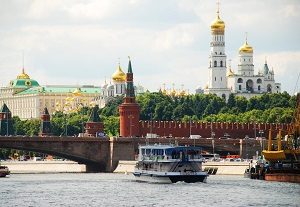
The Kremlin is truly a fascinating structure – at the same time it is an ancient tower, the city´s former military fortification, a palace and the workplace of the Russian President. The Kremlin is the center of Russia´s political life and State power and has been home to Tsars, General Secretaries of the Soviet Union and Russian Presidents. Red Square is within the Kremlin´s walls.
Tour of the Tretyakovsky State Gallery. The world famous gallery contains works of Russian art from the 10th century up until present day. You will view exquisite Russian icons and paintings from the 18th and 19th century including works by Rublyov, Karavak, Vishnyakov, Nikitin, Antropov, Levitsky, Kiprensky, Tropinin, Fedotov, Repin and many others.
On the last day of your cruise you will say goodbye to Russia, your ship’s crew and the many new friends we are sure you will have met during your time with us. We are sure that your memories of the trip will last a lifetime and we look forward to welcoming you to Russia sometime in the future. Our driver will meet you at the ship and take you to the airport to see you off.
Moscow is Russia’s political and financial capital as well as a major world class cultural center. The city includes many must see attractions from the Kremlin and Red Square to the Assumption Cathedral. Moscow is the largest city in Europe. It is unique in that it blends the ancient with the modern. See medieval structures among modern office buildings, walk down crooked old city streets opening up to wide busy boulevards. It is a fantastic city and truly a site that shouldn´t be missed.


